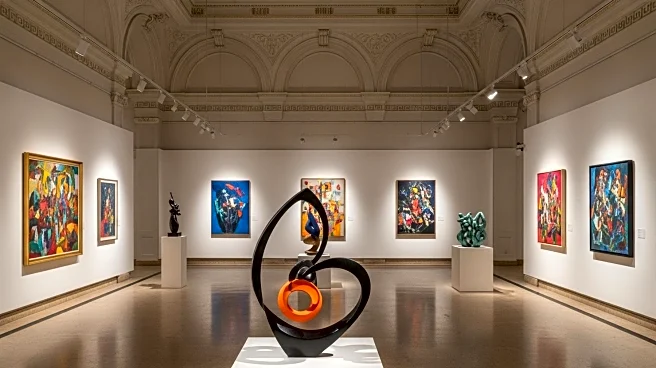What's Happening?
The Tate, a prominent museum group, is experiencing a decline in visitor numbers and financial difficulties, leading to staff redundancies. Despite efforts to attract younger audiences, particularly at Tate Modern, the institution is struggling to maintain its previous levels of attendance. The museum's director, Maria Balshaw, has attributed some of these challenges to a decrease in visitors aged 16-24 from continental Europe. In contrast, the National Gallery, a rival institution, is expanding and has announced plans to build a new wing, reversing its previous policy of only collecting pre-1900 art. This move positions the National Gallery as a formidable competitor in the modern art space, traditionally dominated by Tate.
Why It's Important?
The challenges faced by Tate highlight broader issues within the museum sector, particularly in attracting and retaining diverse audiences. The financial struggles and declining visitor numbers could impact the institution's ability to host major exhibitions and maintain its collection. The National Gallery's expansion into modern art signifies a shift in the competitive landscape, potentially drawing visitors away from Tate. This situation underscores the need for cultural institutions to adapt to changing audience preferences and economic conditions. The outcome of this rivalry could influence funding, sponsorship, and the strategic direction of museums in the UK and beyond.
What's Next?
Tate may need to reassess its strategy to regain its footing in the art world. This could involve diversifying its exhibitions, enhancing its appeal to a broader demographic, and potentially collaborating with other institutions. The National Gallery's expansion plans could prompt further competition, encouraging Tate to innovate and possibly redefine its approach to modern art. Stakeholders, including government bodies and private sponsors, will likely monitor these developments closely, as they could affect future funding and support for the arts sector.
Beyond the Headlines
The situation at Tate raises questions about the sustainability of traditional museum models in the face of evolving cultural consumption patterns. The emphasis on contemporary art and the neglect of historical collections may need reevaluation. Additionally, the role of digital engagement and virtual exhibitions could become increasingly important as museums seek to reach global audiences. The ethical implications of financial cutbacks, such as staff redundancies, also warrant consideration, as they affect the livelihoods of those working within the cultural sector.

